Caring for houseplants is not only a task but also a hobby and a way to relax. However, life sometimes takes you away from your plants, and they may not get the attention they need, especially when it comes to watering. Don’t worry; there are solutions to help your houseplants self-water while you’re away.
Tips for Self-Watering Houseplants
Here are some simple yet effective tricks to help your plants maintain the necessary moisture.
Self-Watering Planters
Self-watering planters are an effective and popular solution. They feature a water reservoir at the bottom, allowing plants to draw water up through drainage holes or wicks. You only need to fill the reservoir, and the plant will regulate the necessary amount of water. This design not only promotes healthy plant growth but also prevents overwatering.
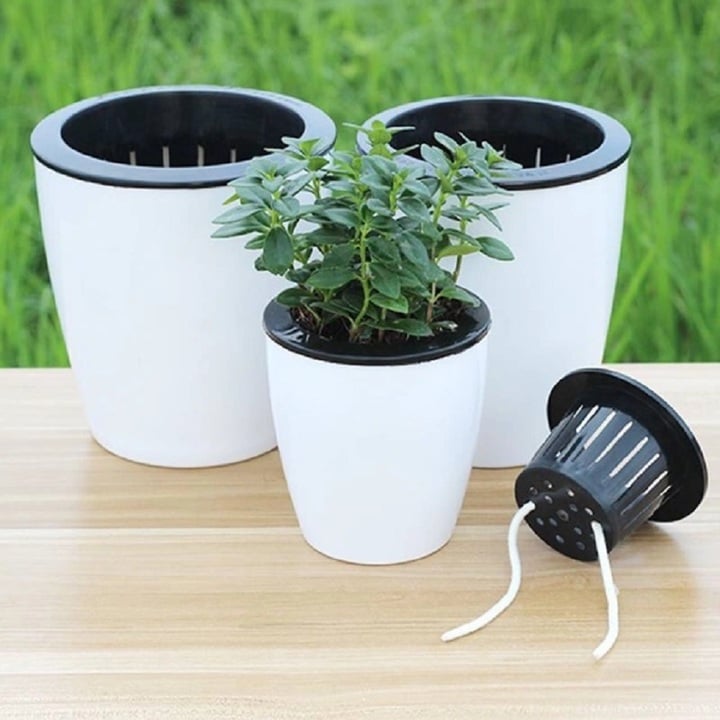 Self-watering planters are a smart choice favored by many. (Image: Nong trai tai gia)
Self-watering planters are a smart choice favored by many. (Image: Nong trai tai gia)
Glass Watering Globes
Glass watering globes (or Aqua Globe watering bulbs) work by gradually releasing water as the soil dries. Fill the globe with water and insert it into the plant’s potting mix. It will automatically water your plant until it is empty.
This method is especially useful if you’re away for extended periods and cannot water your plants regularly.
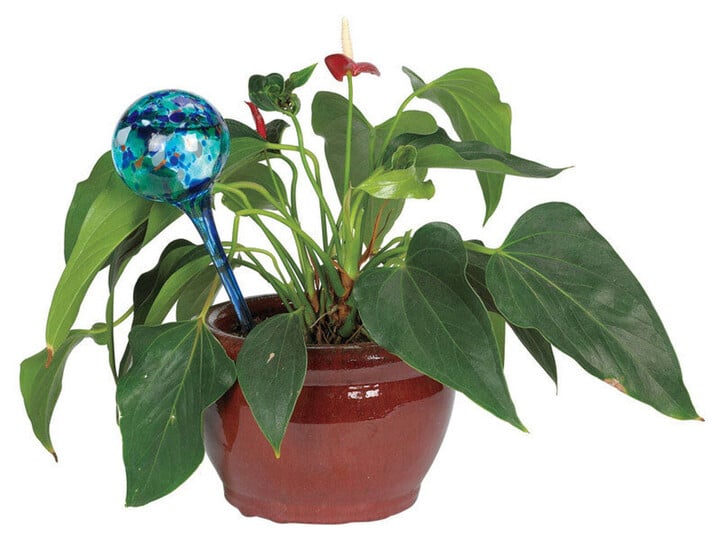 Glass watering globes will automatically water your plants until they are empty. (Image: Grangecoop)
Glass watering globes will automatically water your plants until they are empty. (Image: Grangecoop)
Drip Irrigation System
Drip irrigation systems are not just for agriculture; they can also be used for houseplants or balcony gardens. You’ll need a water reservoir and a few tubes to create a simple drip system. Water slowly seeps through the tubes, providing the necessary moisture for your plants. This is an ideal solution for those who don’t have time for daily plant care.
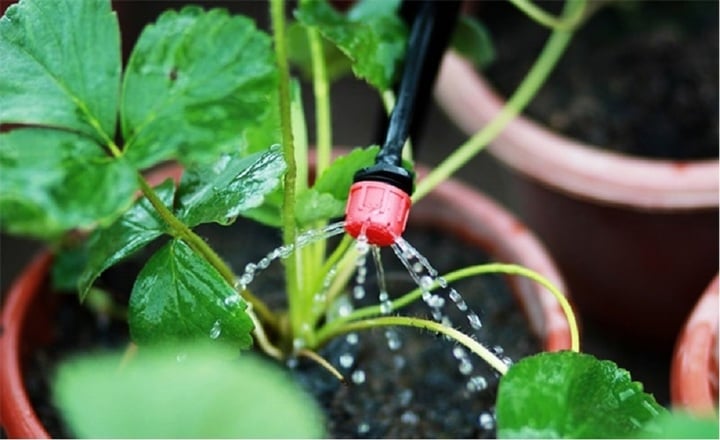 A mini drip irrigation system is a popular choice for many households. (Image: Hoang Dung Green)
A mini drip irrigation system is a popular choice for many households. (Image: Hoang Dung Green)
Using Gravel or Charcoal
Lining the bottom of your pot with gravel or charcoal helps with drainage and moisture retention. The gravel will hold some water and slowly release it to the plant. Charcoal also improves soil quality due to its natural filtering properties.
Secrets to Growing Houseplants That Rarely Need Watering
If you don’t have time to water your houseplants regularly, consider the following tips:
Choose Drought-Tolerant Plants
Certain houseplant varieties, such as cacti, succulents, and money trees, have evolved to adapt to dry, water-scarce conditions. These plants require minimal care and are well-suited to modern lifestyles. They store water efficiently and need minimal amounts to thrive.
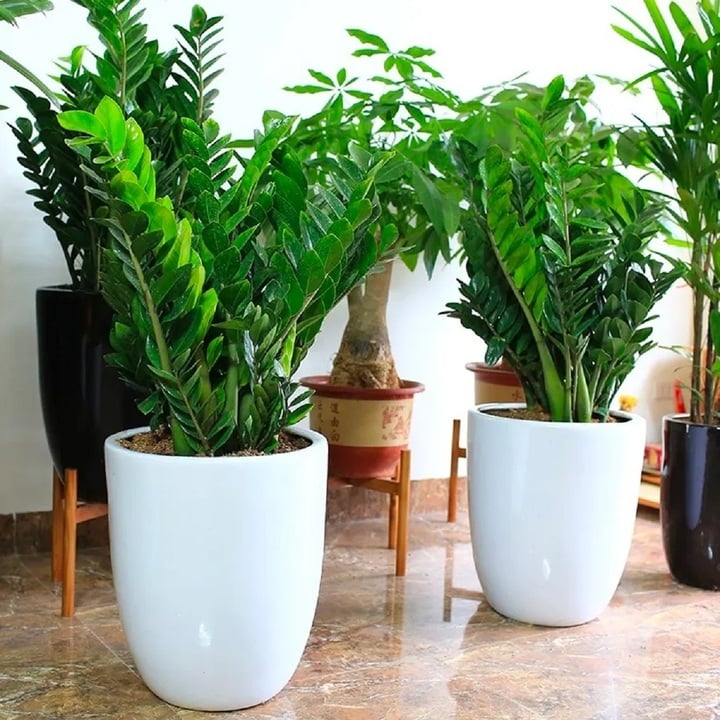 Money trees are highly drought-tolerant. (Image: Spacet)
Money trees are highly drought-tolerant. (Image: Spacet)
Terrarium Gardening
Terrariums are mini, completely enclosed ecosystems that maintain a balanced humidity level. In this setup, water evaporates from the soil and condenses back into water, creating a complete cycle. This system conserves water and provides a self-sustaining environment for the plants.
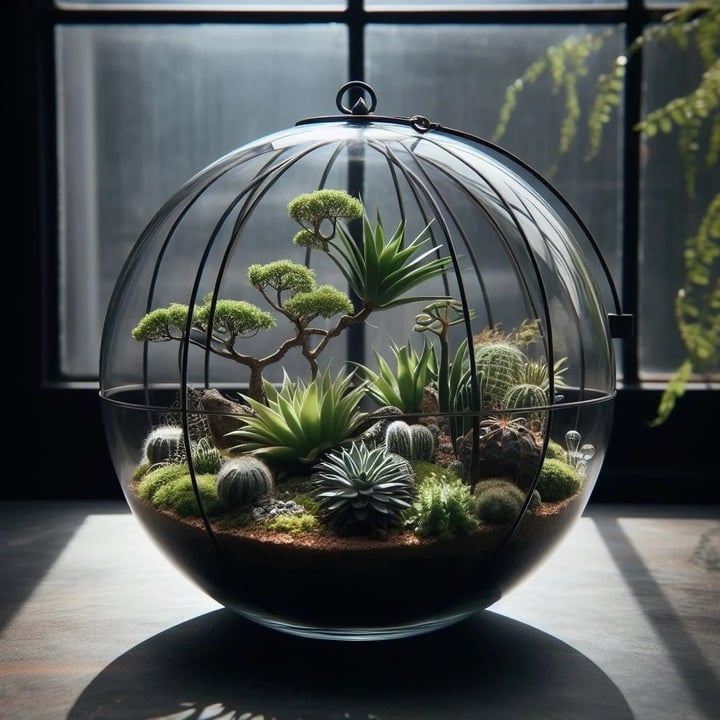 Terrarium gardening is an ideal, low-maintenance way to grow plants. (Image: Tiny garden)
Terrarium gardening is an ideal, low-maintenance way to grow plants. (Image: Tiny garden)
Hydroponics
Hydroponics is a method of growing plants in nutrient-rich solutions instead of soil. Advanced hydroponic systems allow for water reuse, reducing water loss through evaporation. This approach significantly conserves water compared to traditional planting methods.
Moisture-Retaining Mulch
Using a moisture-retaining mulch is a simple yet effective way to reduce water evaporation from the soil. This protective layer shields the soil from direct sunlight and wind, two primary causes of rapid water loss.
Using Biochar
Biochar is a type of biological charcoal mixed into the soil to increase its water-holding capacity. Super-absorbent soil is also a product of biochar, allowing the soil to retain moisture and gradually release it to the plants, reducing the need for frequent watering.






































